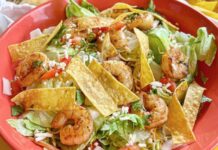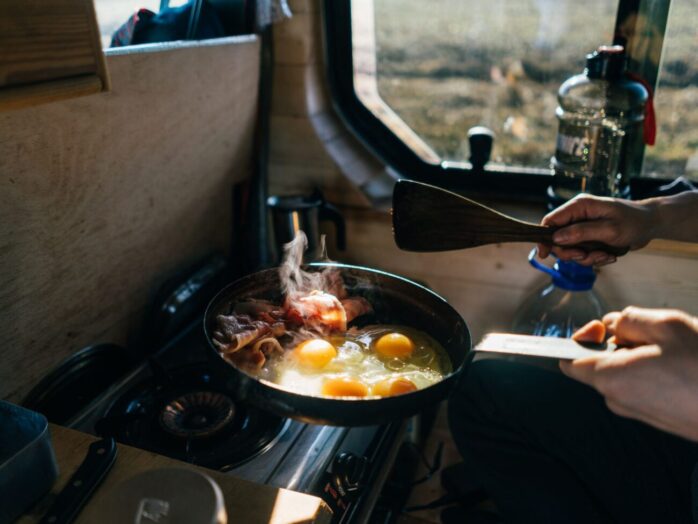
When you go camping, you have to be very careful about the edibles you bring. You can’t bring anything that needs to be refrigerated, so you have to get creative with your menu planning. We’ll give you some tips on how to store perishable food when camping so that you can enjoy your trip without having to worry about food spoilage.
Before you go grocery shopping
Before you go grocery shopping for your camping trip, it is important to think about how you will store your perishable food. Depending on the length of your trip and the type of edibles you plan to bring, you may need a cooler or another storage container like bear canister to keep your groceries fresh.
If you are only going on a short camping trip, you may be able to get away with packing your meals in a regular cooler. However, if you are planning to camp for several days or in a hot climate, you will need to invest in a high-quality cooler that can keep your groceries cold for the duration of your trip.
When packing your cooler, be sure to pack it with ice or frozen gel packs to keep the contents cold. You should also pack your meals in airtight containers to prevent them from drying out. And finally, make sure to keep your cooler in a shady spot so that the sun doesn’t heat up the contents. Make sure to keep raw meat and poultry separate from other items to avoid cross-contamination.
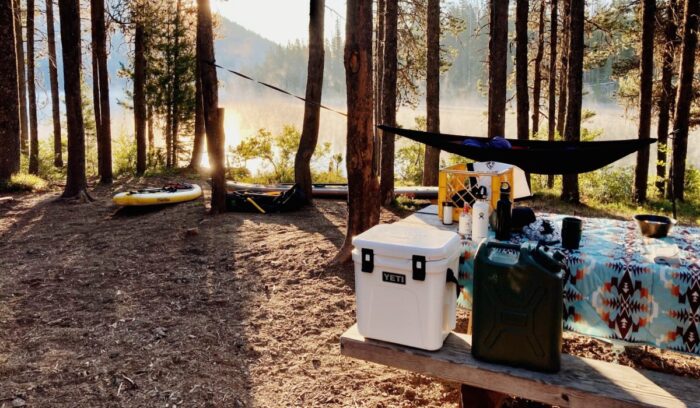
Foods that don’t need to be refrigerated
Assuming you have access to an icebox or cooler, there are plenty of products that don’t need to be kept in the fridge that is perfect for camping. Cured meats like salami, ham, and pancetta will last a few days unrefrigerated, as will hard cheeses like cheddar and Parmesan. Summer fruits and vegetables like tomatoes, melons, grapes, and bananas are also perfectly fine stored in a cool box.
Of course, all of these edibles will last longer if they’re kept chilled, so if you’re planning on a longer camping trip, it’s worth investing in a good-quality cooler.
How to store food while camping in bear country
If you’re lucky enough to be camping in bear country, there are a few things you need to do in order to make sure your food is stored properly. First, you need to choose the right campsite. Pick a spot that’s at least 100 yards from any natural sources of food, such as berry bushes or fishing spots. Once you’ve found the perfect spot, set up your camp and make sure to keep all of your items stored in airtight containers. If you’re cooking anything, make sure to do so away from your sleeping area.
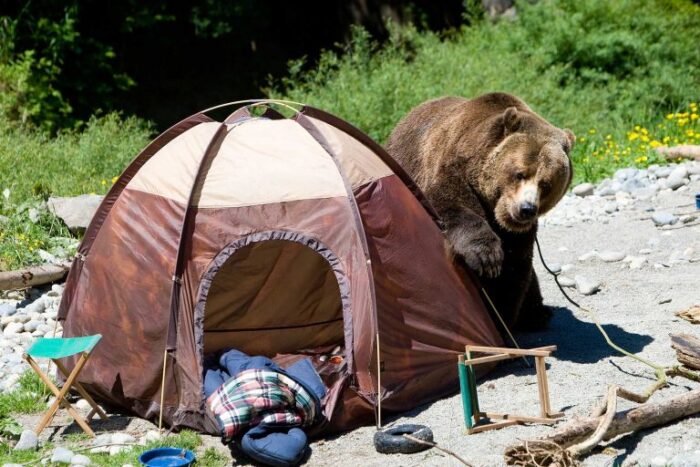
What food to bring camping
Consider both the type of trip you’re taking and your personal preferences. Will you be roughing it in the backcountry or car camping in a developed campground? Backpacking trips will require lighter, more compact groceries that won’t weigh you down, while car camping allows for more variety and bulkier items.
Think about how much time you’ll have for cooking and preparing meals. If you’re short on time, look for groceries that can be eaten without cooking or that can be prepared quickly. If you have more time to spare, consider bringing ingredients for more elaborate meals.
Finally, don’t forget the basics: water, salt, and pepper. These items are essential for both cooking and drinking. Bring along more water than you think you’ll need, as it’s always better to have too much than not enough.
Here are some ideas for camping food, organized by meal:
Breakfast:
- Oatmeal
- Granola bars
- Fruit
- Instant coffee or tea
- Pancake mix
- Eggs
- Bacon
Lunch:
- Peanut butter and jelly sandwiches
- Chips
- Fruit
- Trail mix
- Jerky
Dinner:
- Hot dogs
- Hamburgers
- Steak
- Chicken
- Vegetables
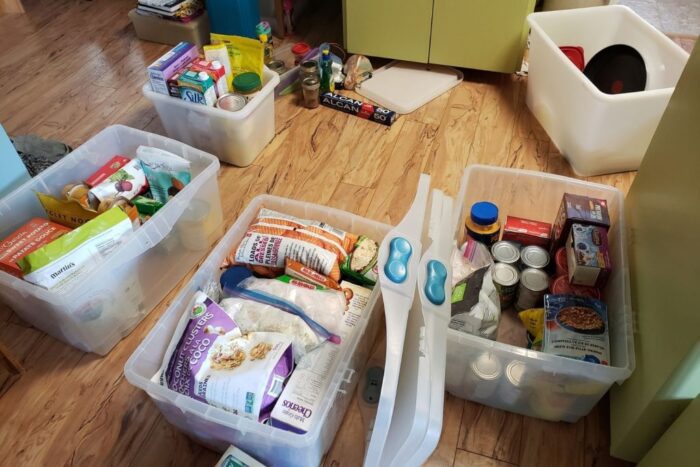
Types of food containers
When it comes to food storage, there are a few key things to keep in mind. First, you want to make sure that your containers are clean and dry. This will help to keep your food fresh and free of bacteria. Second, you want to make sure that your containers are airtight. This will help to keep your edibles from drying out or becoming stale. Finally, you want to make sure that your containers are labeled clearly. This will help you to easily find the one you need when you need it.
There are a variety of different types of containers on the market today. It is important to choose the right type of container for your needs. For example, if you are storing dry goods such as flour or sugar, you will want to use a container that is airtight. If you are storing wet goods such as milk or soup, you will want to use a container that has a tight-fitting lid.
When it comes to choosing the right size container, it is important to consider how much food you will be storing. If you are only storing small amounts, you may want to choose a smaller container. However, if you are planning on storing larger quantities of groceries, you will want to choose a larger container.
There are many different types of containers available on the market, and each has its own advantages and disadvantages. Here is a rundown of the most common types:
Plastic containers: They are by far the most popular type of container. They are cheap, lightweight, and easy to clean. However, they are not very durable and can leach chemicals into food.
Glass containers: Glass containers are heavier than plastic ones, but they are much more durable. They do not leach chemicals into food. However, they are more expensive and can be breakable.
Metal containers: These are also durable and do not leach chemicals into food. However, they can be quite heavy, and some metals can react with certain foods.
Wooden containers: Wooden containers can be very attractive, but they require more care than other types of food containers. They are also not as durable as other options.
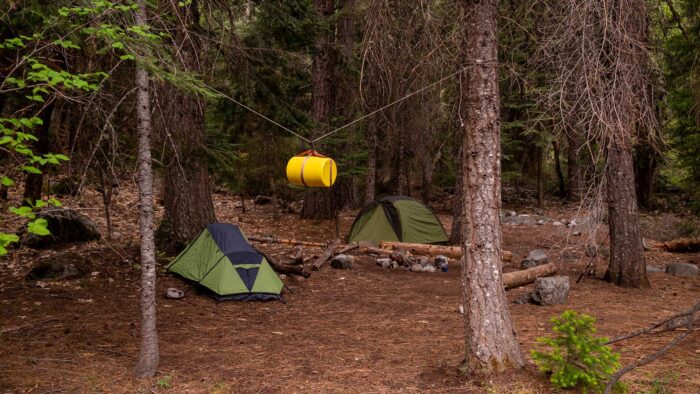
Conclusion
If you are planning to go camping, it is important to think about how you will store your perishable food. With a little bit of planning, you can enjoy fresh food on your trip without having to worry about spoilage. By using an ice chest or cooler, you can keep your food cold and avoid any safety concerns. Be sure to pack plenty of ice or frozen gel packs to keep your food at a safe temperature. When in doubt, throw it out! It is better to be safe than sorry when it comes to food safety.



